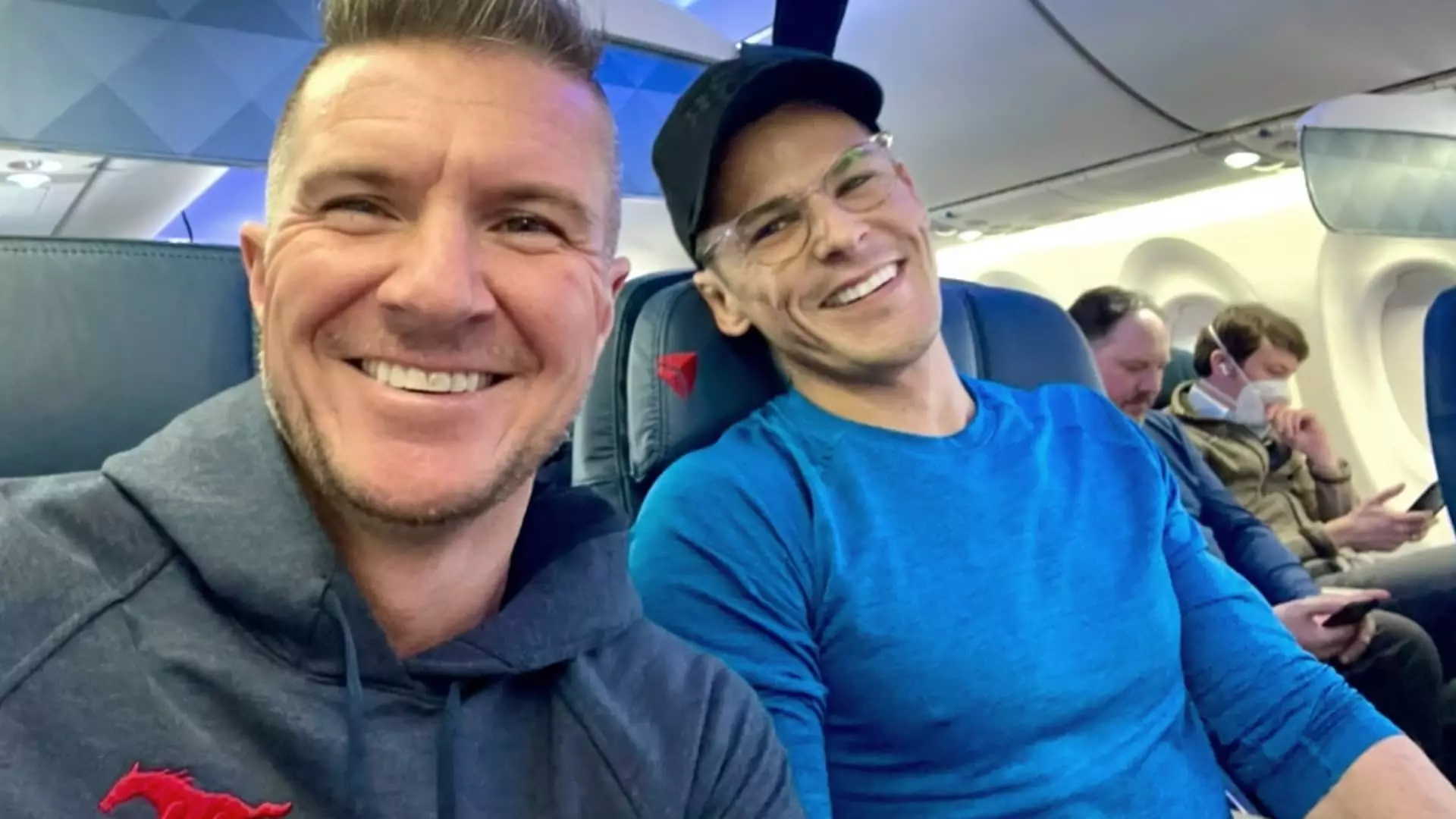Navigating the complex social interactions that occur during a flight can feel like an exercise in patience and resilience. Despite the apparent simplicity surrounding airplane etiquette—such as following boarding procedures and being courteous to fellow passengers—it’s evident that disruptive behaviors persist. In light of this issue, Brandon Blewett’s insightful book, „How to Avoid Strangers on Airplanes: Survival Guide for the Frequent Business Traveler,“ emerges as a thoughtful exploration of these peculiar social dynamics. Rather than merely listing annoying habits, Blewett delves into potential lessons these behaviors can teach us about our professional lives.
Frequent flyers are often met with a range of challenging behaviors, particularly in crowded airport terminals. Blewett identifies „Gate Lice“ as prime examples of this disruption. These passengers swarm the boarding area, disregarding personal space and making the boarding process lengthy and chaotic. However, Blewett argues that these behaviors mirror situations we often encounter in the workplace. For example, just as a traveler may struggle to navigate around an aggressive boarding protocol, professionals may face colleagues striving to hinder their upward mobility.
This connection between flight and work-life universes emphasizes the importance of adaptability. To navigate around obstructive colleagues—akin to dodging “gate lice”—professionals can learn to pivot effectively during their careers. Blewett illustrates this point with his personal career trajectory, transitioning from a job as a car valet into pursuing higher education, ultimately leading to his professional aspirations.
Resilience Through Unwanted Encounters
The airport setting also presents various challenges that may appear trivial at first. Among these is the issue known as „Airbus Assault,“ which involves passengers inadvertently striking others with their backpacks. Blewett suggests that just as businesspeople will face setbacks—such as missed promotions or lower-than-anticipated salaries—they should also cultivate resilience. Apologizing for accidental inconveniences on the plane can serve to remind us of the need for humility and competence in the workplace.
Blewett offers another insightful metaphor with the experience of receiving „smacks,“ those unavoidable setbacks in both flying and business. He recounts being overlooked for positions despite his qualifications. Such experiences can be painful but ultimately serve to prepare individuals for future opportunities. Viewing challenges as opportunities for growth rather than sources of frustration can be enlightening.
Another theme that Blewett underlines is the prevalence of disruptive behaviors, such as “Boeing Boardroom Meetings.” This refers to passengers who refuse to disconnect from conference calls, bringing their workplace chaos onto the flight. These individuals often fail to recognize that delays and inconveniences are a part of both air travel and professional life. The ability to deploy wit, resilience, and unwavering determination—much like Dolly Parton’s humorous responses to adversity—becomes essential in navigating uncomfortable situations.
When considering „Bin Shoehorning,“ or the disruptive act of overstuffing overhead compartments, Blewett highlights how professionals can similarly overwhelm themselves by pursuing unattainable career goals. The imagery of an overflowing bin resonates with those eager to show their worth. However, recognizing when to withdraw from an unfit situation—just as a passenger must reclaim their bag when it won’t fit—fosters growth and clarity regarding one’s true aspirations.
Perhaps the most significant area Blewett touches upon in his work is the role of interpersonal interactions in both flying and business environments. He emphasizes the importance of being a supportive „seat neighbor“ and the value of community, networking, and collaboration. In a time when people often act for selfish gain, the notion of fostering connections and mutual assistance becomes increasingly valuable.
The “Eager Exiter,” a frequent flyer who rushes to disembark as soon as the seatbelt sign goes off, illustrates a common pitfall: impatience. Blewett shares stories that reveal how haste can backfire, echoing invaluable life lessons about the importance of timing in both flight and career endeavors. By focusing on the journey rather than simply the destination, individuals can cultivate meaningful progress.
Brandon Blewett’s exploration into the intersection between airplane etiquette and professional development offers valuable insights into the nature of behavior in both arenas. As he effectively connects the dots between disruptive airline conduct and professional obstacles, readers are encouraged to reflect on their own experiences. Instead of merely condemning poor airport behaviors, viewing them through the lens of personal growth may lead to a more constructive and empathetic approach, transforming challenges into opportunities. Through resilience, adaptability, and humor, both frequent flyers and business travelers can navigate their paths with greater wisdom and awareness.


Napsat komentář